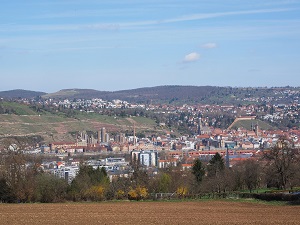![]() Urban Sprawl Reducing Farmland is a news and information topic monitored and covered by: Prepper Watch – Food Concerns
Urban Sprawl Reducing Farmland is a news and information topic monitored and covered by: Prepper Watch – Food Concerns
Introduction
Urban sprawl, the expansion of cities into previously rural or agricultural areas, is an ever-growing concern for preppers focused on sustainability, self-sufficiency, and food security. As cities continue to grow and expand, they increasingly consume farmland that once supported local food production.
This trend creates challenges not only for urban populations that rely on agricultural products but also for those looking to maintain a degree of self-sufficiency.
In this blog, we will explore how preppers can prepare for the reduction of farmland caused by urban sprawl. We will focus on strategies to mitigate the effects of lost local food production, ensure a consistent food supply, and take action toward long-term sustainability. These strategies range from improving urban agriculture practices to sourcing and preserving food from alternative means.
Understanding Urban Sprawl and its Impact on Farmland
Urban sprawl refers to the unplanned, uncontrolled expansion of cities and towns into surrounding rural areas. As the population grows and cities become more crowded, the demand for housing, infrastructure, and businesses increases. This often leads to the conversion of agricultural land into residential, commercial, and industrial zones. The expansion of urban areas means less land is available for farming, which impacts the ability to produce food locally.
For preppers, urban sprawl can have a direct impact on food security. Many preppers focus on producing their own food, whether through gardening, small-scale farming, or community-based efforts. As farmland becomes scarcer and more expensive, the cost of food will likely rise, and reliance on industrial food systems will increase, making it harder to achieve self-sufficiency.
Strategies for Preppers to Prepare for Urban Sprawl
- Urban Farming and Gardening
Urban farming is one of the most direct responses preppers can adopt to prepare for reduced farmland. With limited access to traditional farmland, urban spaces must adapt to growing food in smaller, non-traditional areas.
- Vertical Gardening: Growing food in vertical structures is an efficient way to maximize space. Preppers can use walls, trellises, and vertical garden towers to grow crops like tomatoes, cucumbers, and leafy greens. This technique reduces the need for large plots of land while still providing fresh produce.
- Container Gardening: Containers offer a flexible and mobile option for urban preppers. Whether using pots, raised beds, or even recycled materials, container gardening allows for easy access to homegrown food. Containers can be placed on balconies, rooftops, or small backyard spaces.
- Community Gardens: In many urban areas, vacant lots and unused spaces can be transformed into community gardens. By organizing with like-minded individuals, preppers can create shared spaces for growing food. This approach not only provides access to land but also fosters community resilience and self-sufficiency.
- Aquaponics and Hydroponics
In urban environments where space is limited, alternative farming methods like aquaponics and hydroponics are becoming increasingly popular. These systems are especially beneficial for preppers, as they allow for food production without the need for soil.
- Aquaponics: This system integrates fish farming with plant cultivation. Fish waste provides nutrients for the plants, while the plants help filter and clean the water for the fish. This creates a mutually beneficial relationship between aquatic life and plant growth. For preppers, an aquaponics system offers a sustainable, closed-loop method of producing both fish and vegetables, even in small urban spaces.
- Hydroponics: Hydroponic farming involves growing plants without soil, using mineral solutions to provide nutrients. Hydroponic systems can be set up indoors or on rooftops, allowing preppers to grow a variety of crops in urban environments. This method is particularly useful for growing leafy greens, herbs, and some types of vegetables.
- Permaculture Design
Permaculture is a holistic approach to land management and food production that seeks to create sustainable, self-sufficient systems. By applying permaculture principles, preppers can design food-producing landscapes that work with nature rather than against it.
- Urban Permaculture: In urban areas, permaculture can be applied to both residential and community spaces. Preppers can design their gardens with perennials, fruit trees, edible shrubs, and companion plants to create low-maintenance, sustainable food sources. These systems often rely on natural water cycles, organic matter, and biodiversity, reducing the need for external inputs like pesticides or synthetic fertilizers.
- Food Forests: A food forest is a permaculture system that mimics the structure of a natural forest but is designed for food production. In an urban environment, a small food forest can be created by planting a variety of perennial plants that provide food year-round, such as fruit trees, berry bushes, herbs, and root vegetables.
- Sourcing Food from Non-Traditional Sources
As urban sprawl reduces the availability of farmland, preppers must look beyond traditional farming and gardening methods to ensure food security. Several non-traditional sources of food can provide a steady supply for preppers.
- Foraging: Foraging is the practice of gathering wild plants, mushrooms, and other edible items from nature. Preppers who live near forests, parks, or even urban green spaces can forage for food. Many urban areas have a wealth of edible plants like dandelion greens, wild garlic, and berries, which can supplement the food supply.
- Raising Livestock: While raising livestock in urban areas can be challenging due to zoning laws and space constraints, it is still possible in certain situations. Urban chickens, rabbits, and even goats can provide a source of eggs, meat, and milk. Livestock also produces manure that can be composted and used to fertilize plants.
- Hunting and Fishing: For preppers with access to nearby wilderness or even urban rivers and lakes, hunting and fishing can provide a valuable source of protein. While urban sprawl reduces available land for hunting, it is still possible to find hunting opportunities in surrounding rural areas or urban wildlife zones.
- Stockpiling and Preserving Food
As farmland becomes more scarce, food prices are likely to rise. Preppers can combat this by stocking up on non-perishable food items and preserving their harvests.
- Canning and Preserving: Preppers can stockpile food by canning fruits, vegetables, meats, and sauces. Canning helps preserve food for long periods, ensuring that there is a backup supply of food even when fresh produce becomes scarce.
- Dehydrating: Dehydrating food is another excellent preservation method. Preppers can dehydrate fruits, vegetables, herbs, and meats to create lightweight, long-lasting food supplies. Dehydrated foods can be stored in airtight containers and used when fresh food is not available.
- Freezing: For those with access to a freezer, freezing is an effective way to preserve food. Preppers can freeze excess produce from their gardens or bulk purchases to ensure a consistent food supply.
- Advocating for Agricultural Preservation
While preppers can take steps to prepare individually, it is also important to advocate for larger systemic changes that preserve farmland and promote sustainable food production practices.
- Land Conservation: Preppers can engage in efforts to protect agricultural land from being developed into urban spaces. This can involve supporting policies that limit urban sprawl, such as zoning laws that protect farmland, as well as supporting initiatives that promote urban agriculture.
- Supporting Local Farmers: One way to counteract urban sprawl’s effects on food production is by purchasing from local farmers and supporting community-supported agriculture (CSA) programs. This helps keep agricultural land viable and strengthens local food systems.
- Political Advocacy: Preppers can get involved in local and national political movements that advocate for sustainable farming practices, land preservation, and food security policies. Supporting politicians and organizations that prioritize agriculture can help combat the negative effects of urban sprawl.
Conclusion
As urban sprawl continues to encroach upon farmland, preppers must become increasingly resourceful in securing their food supply. By adopting urban farming techniques, investing in alternative farming methods like aquaponics and hydroponics, utilizing permaculture principles, sourcing food from non-traditional means, and preserving their harvests, preppers can adapt to the challenges posed by urban expansion.
Ultimately, preppers must recognize the importance of not only personal resilience but also collective efforts to protect agricultural land and support sustainable food systems. By embracing these strategies and advocating for policies that protect farmland, preppers can ensure their future food security and maintain a degree of self-sufficiency even in an increasingly urbanized world.

